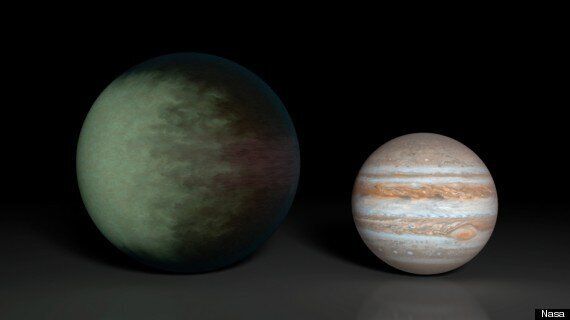Nasa have maps the clouds on a distant, mysterious planet outside our solar system.
Using data from the Kepler and Spitzer space telescopes, the agency managed to map the Jupiter-like world of Kepler-7b located about 1,000 and 1,400 light-years away from our sun.
Three years of observations were needed to map the 'very low resolution' image of the clouds, below:

The space telescope Kepler was used to first make a rough map of the planet, which showed a bright spot on its western hemisphere. But without further data it was unknown whether this spot was caused by heat or reflected light. Scientists then used the Spitzer telescope to measure the temperature of the planet (a relatively cool 1,500-1,800 degrees Fahrenheit), and determine that the spot was more more likely to be light bouncing off clouds than a heat spot.
"By observing this planet with Spitzer and Kepler for more than three years, we were able to produce a very low-resolution 'map' of this giant, gaseous planet," said Brice-Olivier Demory of MIT, who co-authored the paper.
"We wouldn't expect to see oceans or continents on this type of world, but we detected a clear, reflective signature that we interpreted as clouds."
Kepler-7b is a pretty strange world by the standards of our solar system. It orbits its star in a tight orbit (5.6 million miles, or closer than Mercury). And although it is much larger than Jupiter - about half as big again as that world, or 16 times larger than Earth - it is much less dense. In fact, if you placed the planet in a giant swimming pool it would actually float.
More than 150 confirmed exo-planets have been discovered so far by Kepler, with 900 known about in all. Recently a mechanical issue with its reaction wheels mean it is unable to collect new data for the search, but astronomers still have four years of findings to scour through for more insights.
Nasa has more details about how the picture was made, and how it continues to search for exo-planets.